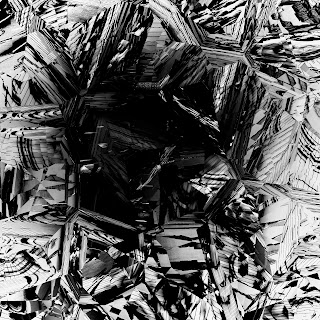Blacks are compelling in their variety, dynamism, depth, richness, delicacy and beauty as colors. Within the blacks palette, there are soft, hard, strong, light, luminous, shadowy and a host of other color characteristics. Throughout my career as a photographer I have studied the richness and artistry of the various tones of blacks, marvelous additions to any photograph/artwork. And, especially working in Black and White architectural photography, I need to compose with the Blacks areas of the compositions in order to give prominence and form to the darks as well as the lights. However, using a blacks palette for abstract photography is quite another story as the forms are created not by subject but by my own composition.
In working with my current theme of abstract photography, I have been fascinated with focusing on monochromatic color as a structural guide for composition. Blues, greens, sands have all been utilized as unique hues, but with enormous range of spectrum within their own color grouping. My first book was of abstracts within the whites palette. This palette was chosen arbitrarily so that I could envision how abstracts of different styles might have a connection through values of tone and hue. Whites, because they can be indistinguishable from each other and actually "lose" form and content, proved to be a benchmark in my experimentation with a series connected through a single palette but with all of its various iterations. Working in this monochrome palette, I found that I could accomplish many of my goals and thus, I proceeded to blues, which were another challenge. Once I had a collection of abstract photography in various blues palette I sought out another color of great beauty yet, like whites, challenging in its properties: blacks.
Blacks, like most colors, have limitless variations within their "category" of color; however, these can easily dominate an abstract and/or create challenges when I am attempting to bring forth forms because of the way in which the darks blend into each other. Further, adding too much light takes away from the notion of an abstract dominated by the palette of blacks.
Composing with the wide array of blacks colors, I have come to a greater understanding of the relationships of dark tones and how they interact within a specific composition of an abstract. I think that abstracts are a little like jazz in the sense that I can riff off components in the composition as they "happen" rather than focusing on a particular subject or form. The Blacks especially allowed for this as I was compelled to create and bring forth forms and line without compromising the overall elements of using darkest and lighter darks. Working with and studying the Blacks palette greatly added to my knowledge of all photography and will certainly further my ability to create realism as well as abstract photography and art in the future.





This comment has been removed by a blog administrator.
ReplyDelete